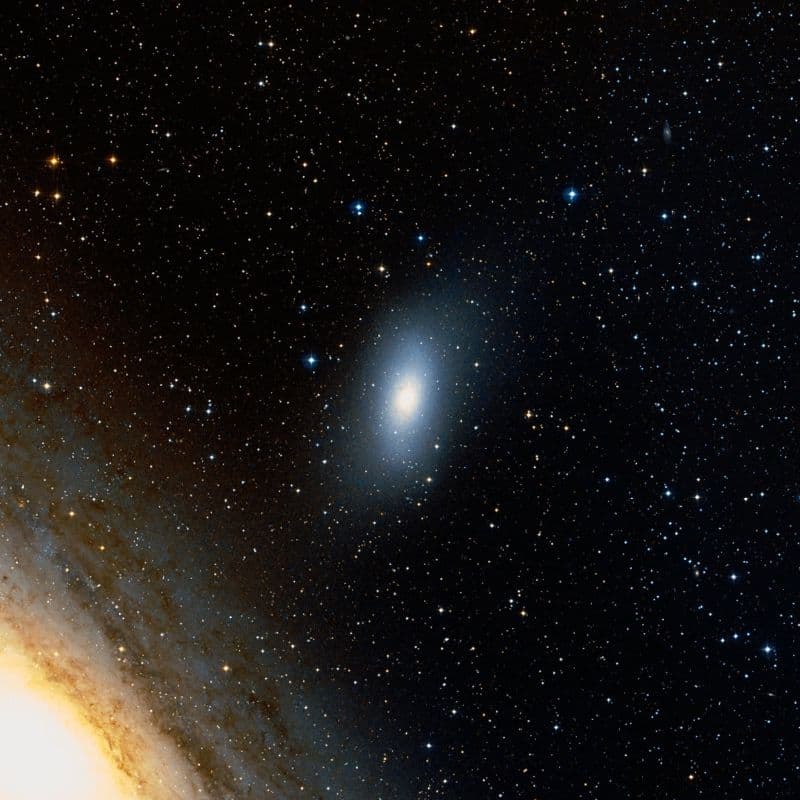The Cosmos with M110
Messier 110 (M110), also known as the Edward Young Star, is a dwarf elliptical galaxy located in the constellation Andromeda.
M110 is a satellite of the much larger Andromeda Galaxy (M31). It lies at a distance of 2.69 million light years from Earth and has an apparent magnitude of 8.92. It has the designation NGC 205 in the New General Catalogue.Messier 110 occupies an area of 21.9 by 11 arc minutes of apparent sky, corresponding to an actual diameter of 17,000 light years. In spite of its size, the galaxy is difficult to observe with binoculars because it has a low surface brightness.
Messier 110, or M110, also known as NGC 205, is a dwarf elliptical galaxy that is a satellite of the Andromeda Galaxy. Although Charles Messier never included the galaxy in his list, it was depicted by him, together with M32, on a drawing of the Andromeda Galaxy; a label on the drawing indicates that Messier first observed NGC 205 on August 10, 1773. The galaxy was independently discovered by Caroline Herschel on August 27, 1783; her brother William Herschel described her discovery in 1785. The suggestion to assign the galaxy a Messier number was made by Kenneth Glyn Jones in 1967.
This galaxy has a morphological classification of pec dE5, indicating a dwarf elliptical galaxy with a flattening of 50%. M110 is designated peculiar because there are patches of dust and young blue stars located near the center. This is unusual for dwarf elliptical galaxies in general, and the reason for this peculiarity is unclear. Unlike M32, NGC 205 does not (as of 2005) show evidence for a supermassive black hole at its center.
